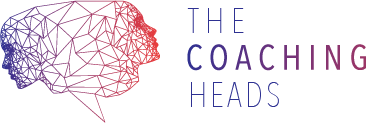What drives a growing mindset?
In the episode “Four Eyes” of “Little House on the Prairie” Miss Beadle, the schoolteacher, explains to Mary Ingalls’ parents the mysterious decline in Mary’s school performance, addressing her possible fixed mindset. According to Miss Beadle, when reaching their limits many talented children are not willing to make any effort to learn and are often outmatched by less talented classmates who are certainly used to give in to succeed.
Fortunately, Mary just needs glasses, and she will get back to being a top notch soon. Still we can surely relate to similar scenarios in our daily working life. When confronted with new topics, most people’s performance declines due to their lack of willingness to adjust their routine and learn something new.

How does the brain work in the face of changes?
In the brain, changes are perceived and elaborated in its very deep region called the amygdala that also steers all our emotional and more irrational processes, as well as the “fight-or-flight” response, within the so-called limbic system.
The amygdala determines whether what is happening has to be interpreted as a thread or a reward. Basically, our entire nervous system reacts in this binary way. We, humans, are attracted to rewards and we avoid threats instead.
Interestingly enough, this is the most important criteria in our decision-making process at any level :-@
When a change is coming, the brain sends an alert: Danger! Danger! Something new is approaching and it is not likely to be anything good for us!!! The amygdala sends out commands to the body to be ready to fight (yes, as simple as that and we are that prehistoric), hormones and adrenaline with a vasoconstrictor effect are produced. As a result of this, we are not only stressed, but also more and more exposed to health issues.

There is an interesting reason why the brain tends to associate changes with a dangerous situation. Changes force one to question their capabilities and competencies to cope with those. This is strictly related with those individuals cultivating a Growth- or a Fixed-Mindset.
People with a fixed mindset operate in the conviction that their competences are a given set of skills.
Intelligence cannot grow or be enhanced.
Such individuals are good at what they are doing, however, they do not tolerate failure.
Because failure is the most relevant component in a change process, it becomes clear why those individuals avoid to be confronted to changes. If they cannot escape and the moment they will naturally fail, you will be able to tell that you are interacting with a fixed mindset person simply because they will blame anything else but themselves for the failure.

People with a Growth Mindset see change as an opportunity, they are willing to go through learning processes and are not scared to fail. They are aware that failure brings experience, they will be open to feedback and they won’t question their skills for not championing a process, yet!

How come? Nobody likes to fail, right? Keep reading…
Striving for a growth mindset brings a surprisingly positive added value: It encourages neuroplasticity, that is the ability of the brain to build up new neuronal connections. This summarizes the magic of our brain in one action: it does get older but it never stops growing!
It is crucial that organisations in which change will play a role start cultivating this Growth Mindset, and more specifically in the perspective of going through digital transformation. The Growth Mindset should be lived top down, for example creating a failure, or better, a learning culture and encouraging employees to learn and practice new things. As usual, the most important element that enables a culture to cultivate a growth mindset is TRUST.
Is it possible to systematically build trust in an organisation?
Yes. Here, the protagonist is, again, the brain. Neuroscience identifies five elementary needs that should be found in any corporate culture. If these needs are fulfilled, you will be able to create the perfect working environment that allows co-workers to trust each other, to be creative, honest, cooperative, constructive, inclusive, focused and efficient. We are talking about the so called SCARF Model part of organisational change, that we will talk about in the next episode of… Growing your mindset with the Coaching Heads!
Stay tuned!
How to start a Growth Mindset revolution, you ask? Well obviously with The Coaching Heads – coaching – training – revolution!
If you would like to deep dive into the topic, the book Mindset: The New Psychology of Success by Carol S. Dweck is the best read. Oh and of course the Little House on the Prairie, S01 – EP05.
Get The Coaching Heads right on Your Inbox
Subscribe now and discover the best tips and strategies about Communication styles, Coaching techniques, Transformational leadership, Performance management and much more.



